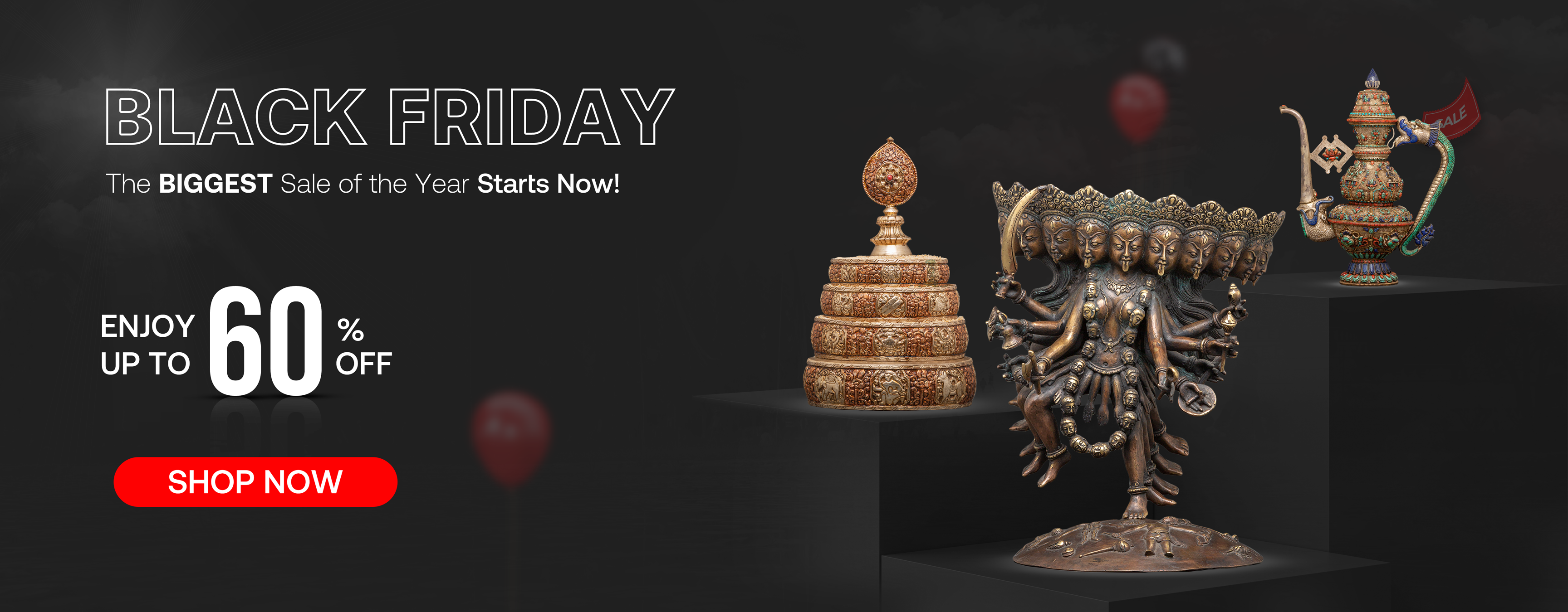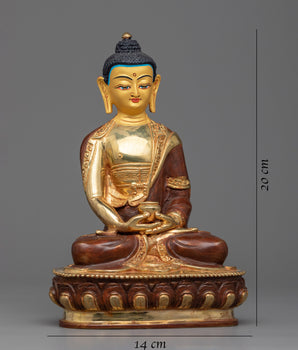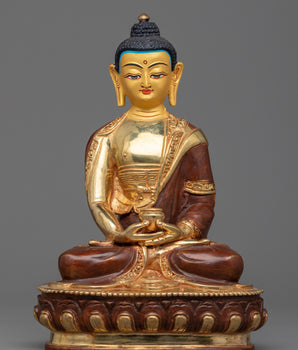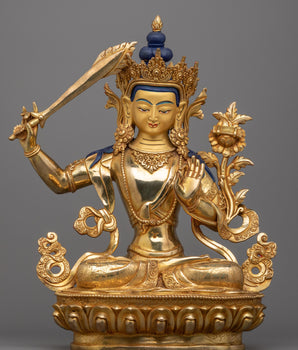If you're new to Buddhism and just beginning your meditation journey, setting up a Buddhist altar at home can provide spiritual grounding, focus, and a sense of sacred purpose.
A Buddhist altar is a powerful visual representation of your inner path offering you space to reflect, center yourself, and nurture devotion.
In this beginner-friendly guide, you'll learn how to thoughtfully build your own altar from choosing the right spot and selecting symbolic items, to creating a space that resonates with mindfulness and intention. You’ll also find links to quality items on Evamratna.com that support your practice.
Whether you're wondering, "How do I set up a Buddhist altar at home?", this step-by-step guide has you covered.
The Purpose of a Home Altar
Creating a Buddhist altar serves as a tangible focal point for your spiritual path. In Buddhist tradition, it represents the enlightened body (statue or image), speech (texts), and mind (stupa or symbolic object) of the Buddha.
For beginners, it provides a sacred space to return to daily, supporting mindfulness, reinforcing your intention, and visually reminding you of your commitment to awakening.
Where to Place Your Altar
Finding the right location is the first step in setting up your altar.
-
Choose a quiet, undisturbed space. Whether it’s a corner of your bedroom or a dedicated meditation area, ensure the location promotes stillness.
-
Elevate the altar. Traditionally, the altar is positioned higher than where you sit in meditation to signify respect.
-
Keep it clean. Clear the space and consider lighting incense to purify the area.
-
Set an intention. Mentally dedicate the space as your personal temple or a spiritual anchor in your home.
What to Put on Your Altar
Here are the core elements of a beginner’s Buddhist altar:
1. Buddha Statue or Image
This is the central piece. It symbolizes the enlightened nature you aspire to embody. You can find beautifully crafted options at Evamratna.com. Choose one that personally resonates with you.
2. Dharma Texts or Sutras
Placed traditionally to the left of the statue, these represent the Buddha’s teachings. A simple printed sutra or even a quote from the Dhammapada is a perfect start.
3. Stupa or Symbolic Object
Often placed to the right of the Buddha statue, a stupa represents the enlightened mind. If you’re not ready to purchase a stupa, any symbolic object that evokes peace and wisdom can be used.
4. Offering Bowls, Flowers, Candles, and Incense
These daily offerings symbolize generosity, impermanence, and devotion. Start with:
-
A small water bowl
-
A flower/fruits as offering
-
A candle or Butter Lamp
-
A stick of incense
 Shakyamuni Buddha Statue for Meditation Altar from Evamratna
Shakyamuni Buddha Statue for Meditation Altar from Evamratna
How to Assemble Your Altar (Step-by-Step)
-
Clear and cleanse your space. Clean the area and purify it with incense or intention.
-
Place your central Buddha statue or image. Keep it centered and elevated.
-
Add texts to the left and stupa/symbolic items to the right.
-
Set up your offerings. Keep them fresh, meaningful, and minimal.
-
Add optional items. If desired, place a mala, bell, or additional elements.
-
Dedicate the space. Sit quietly, reflect on your intention, and welcome this new sacred zone into your life.

Maintaining Your Sacred Space
-
Clean regularly. Wipe dust, refresh water, replace flowers and candles.
-
Offer daily. Even a single candle or bow shows presence and gratitude.
-
Use it mindfully. Begin meditation by focusing on your altar—letting it anchor your awareness.
-
Evolve it. As your practice grows, so might your altar. Add meaningful elements over time.
Common Mistakes to Avoid
-
Placing it in busy areas. Avoid kitchens, bathrooms, or high-traffic spots.
-
Overcrowding. Keep it simple and uncluttered.
-
Using it only as decoration. Remember, it’s a spiritual support, not an art piece.
-
Letting it gather dust. Neglecting your altar can reflect neglect of practice.
-
Overspending early on. Begin with heart and intention; grow your space as you grow.

Read more about Sevel-Bowl Water offerings to Three Jewels
Creating a Meditation Setup for Yourself
Beyond just the altar, your entire meditation setup plays a key role in supporting consistency, posture, and inner peace. Whether you're meditating for five minutes or forty, your physical space should gently guide your attention inward.
Choose the Right Seat
-
Use a zafu (round cushion) or folded blanket that elevates your hips slightly above your knees. This promotes comfort and straight posture.
-
Place your cushion on a zabuton (flat mat) to support your ankles and knees on hard flooring.
-
Consider a meditation bench if you prefer kneeling postures (seiza style).
2. Face the Altar
-
Always orient your cushion directly facing your altar.
-
The altar becomes your visual anchor, even if you keep your eyes closed during meditation.
3. Keep Accessories Nearby
-
Place a meditation timer, journal, mala beads, or singing bowl nearby to enhance your routine.
-
Use soft lighting like a Himalayan salt lamp or tea light candles to create warmth and calm.
4. Mind the Atmosphere
-
Ensure fresh air or use a natural incense like sandalwood or cedar.
-
Add a meditation shawl or light blanket to feel grounded and warm.
5. Respect Your Setup
-
Avoid eating, using your phone, or multitasking in this space.
-
Keep it clean, intentional, and sacred.
Creating your meditation setup is about making your practice inviting, accessible, and meaningful. Over time, this small area becomes a spiritual refuge that calls you back to yourself. Begin with a quiet space, a statue or image, a few simple offerings, and your heart’s commitment to practice. Your altar becomes a sacred mirror for the qualities you’re cultivating—wisdom, compassion, presence.
Want to begin right away? Browse curated altar essentials at Evamratna.com, choose one or two items that speak to you, and light that first candle—your sacred space awaits.
















